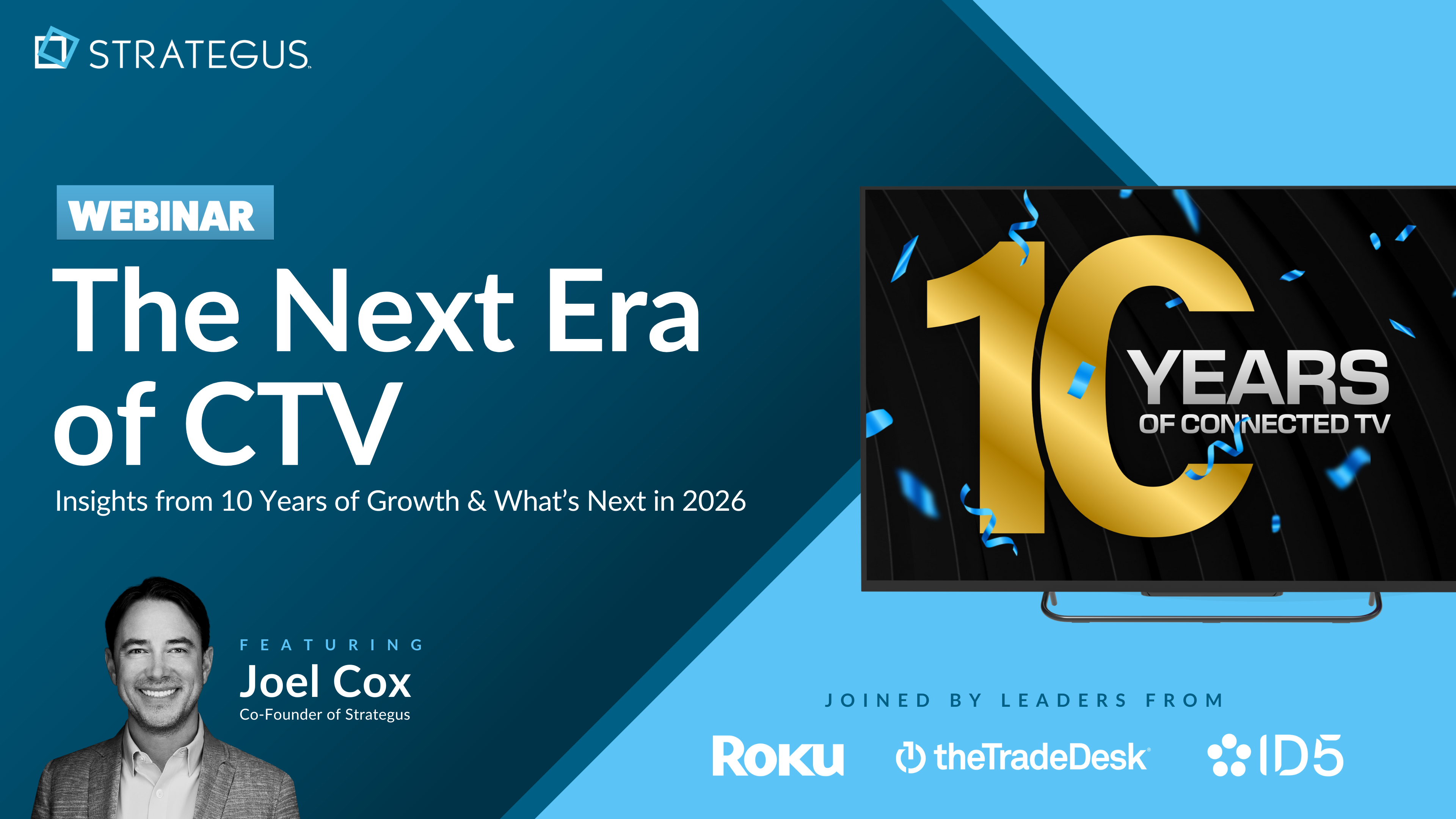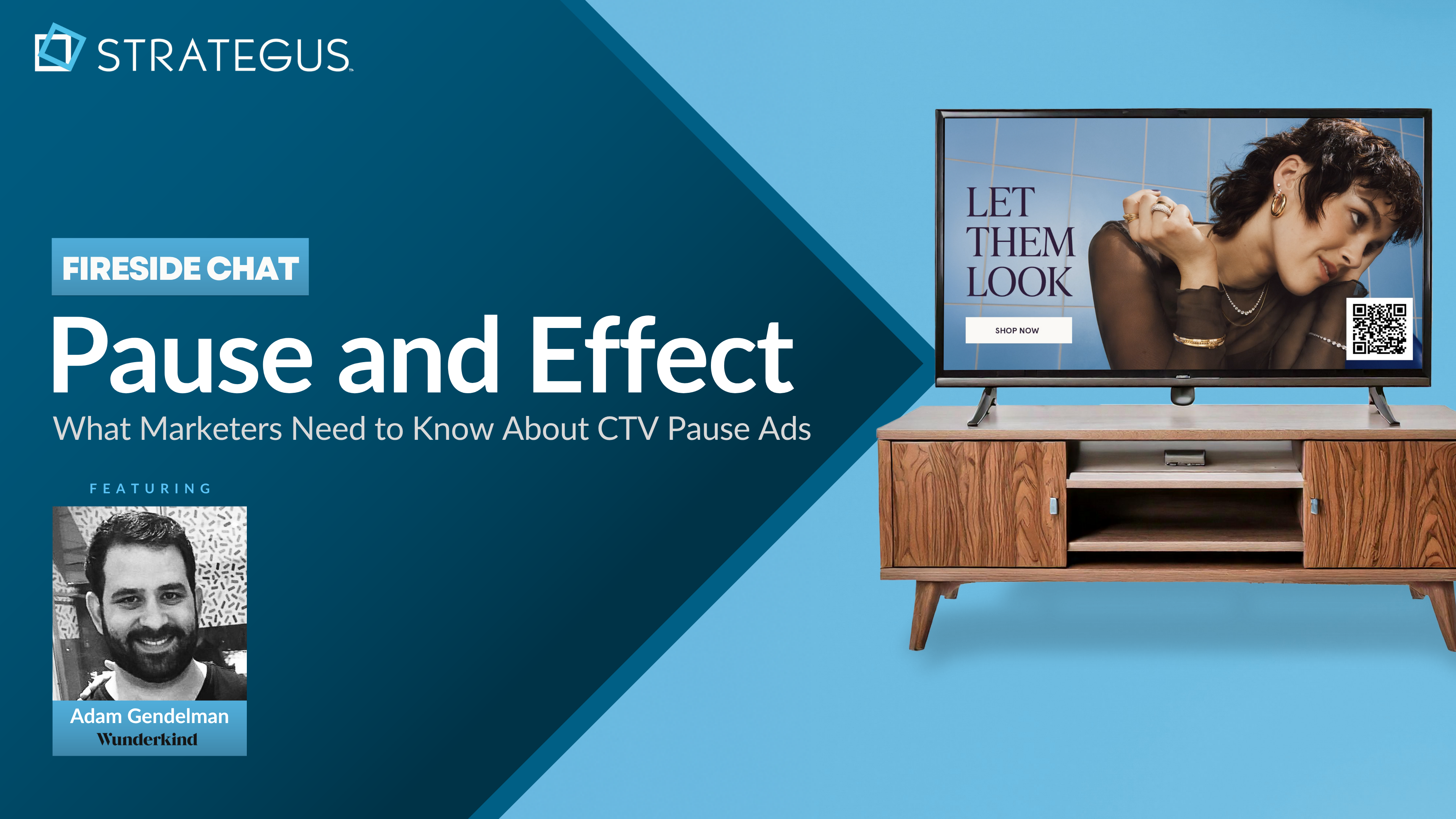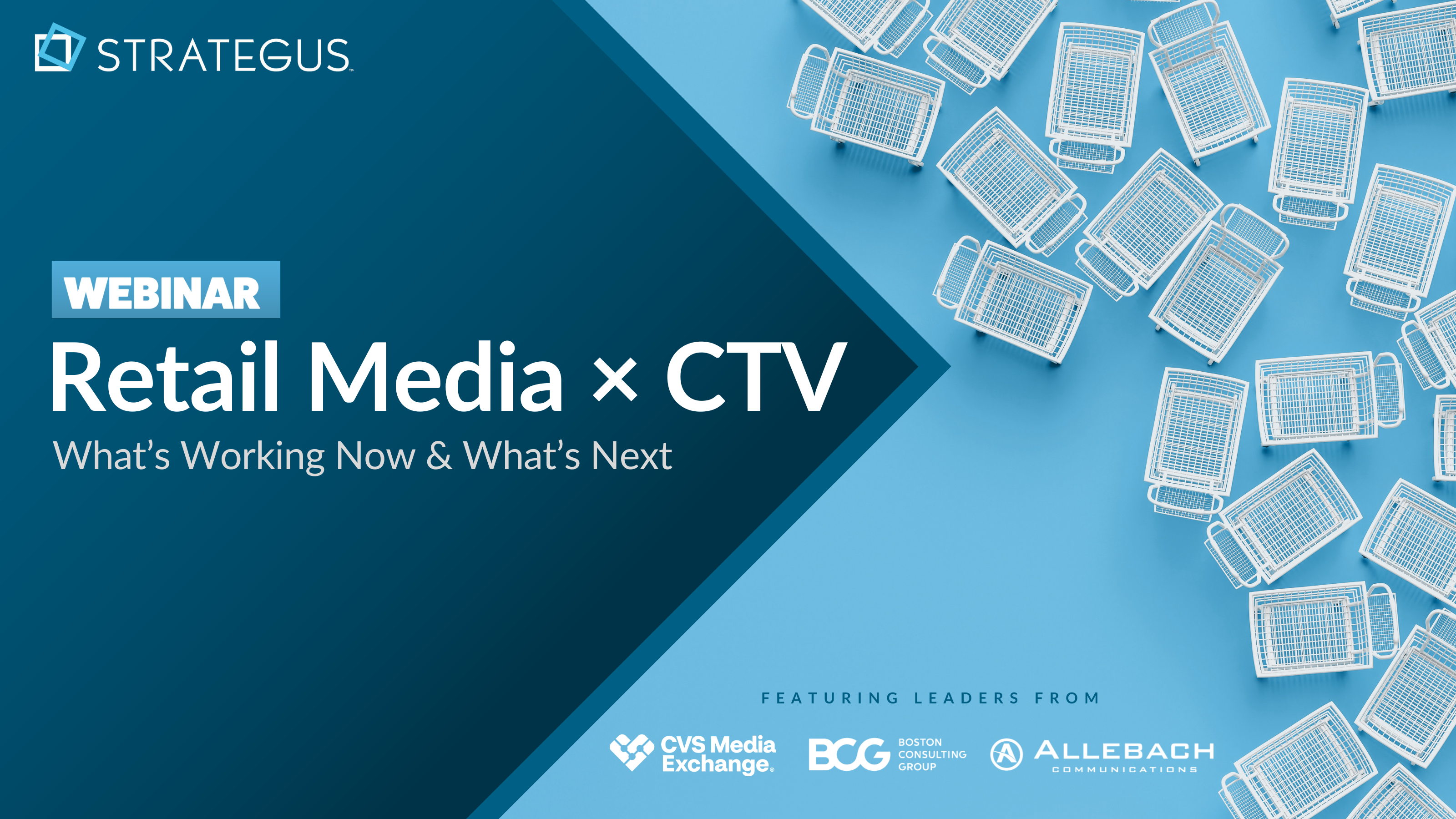- Home
- Strategus Blog
- What is HVOD and Why it Matters for Advertisers in 2025
What is HVOD and Why it Matters for Advertisers in 2025
 Traci Ruether
Traci Ruether
8 minutes read

As streaming costs rise and subscription fatigue sets in, more viewers are choosing hybrid video on demand (HVOD) platforms, where premium content comes with fewer ads, not higher fees.
For advertisers, HVOD offers the best of both worlds: high-quality inventory and a highly engaged audience. This guide explains what HVOD is and why it matters in 2025.
What Is HVOD?
HVOD, or hybrid video on demand, describes streaming services that blend monetization models, often by offering ad-supported subscription tiers at a lower monthly rate. Netflix, Disney+, and Hulu all fall into the HVOD category because they generate revenue through a mix of commercials and subscription plans.
Another example of HVOD is the combination of free ad-supported content (think YouTube), one-time purchases (like the premium movies rented or bought on YouTube), and linear TV (YouTubeTV). In this case, it’s made up of a mix of TVOD, AVOD, and vMVPD — which we define below.
How HVOD Compares to Other CTV Monetization Models
So what’s the difference between HVOD, AVOD, SVOD, and TVOD? In a nutshell, HVOD incorporates various monetization tactics across all categories.
Here’s a look at the other models that streaming platforms use to convert content into cash.
- Subscription Video on Demand (SVOD): SVOD services have been the de facto standard for connected TV (CTV) since Netflix first launched. With this model, users pay for premium commercial-free content, as well as on-demand access to all the available titles.
- Transactional Video on Demand (TVOD): Also called pay-per-view, TVOD services let viewers buy or rent content on a one-off basis. Many cinematic releases now offer early access via TVOD services, as well as premium live events like UFC fights.
- Advertising-Based Video on Demand (AVOD): Streaming platforms like YouTube offer on-demand content free to users — relying on commercials and other advertising techniques to generate revenue. AVOD is the dominant model across the Asia-Pacific and is commonly used for social media platforms like TikTok in the U.S.
- Virtual Multichannel Video Programming Distributor (vMVPD): vMVPD providers like fuboTV, YouTube TV, and Sling deliver scheduled linear content over the top (OTT). This looks a lot like traditional cable and satellite broadcasting, wherein multiple channels are bundled together and sold as a package.
- Free Ad-Supported Streaming TV (FAST): As the other linear model on this list, FAST apps like the Roku Channel and Pluto TV deliver scheduled programming with commercial breaks at no cost to users. This growing segment reflects a return to ad-supported content as the driver of revenue.
Click here to learn more about AVOD vs SVOD vs MVPD vs vMPVD.
With HVOD, streaming platforms are experimenting with a mishmash of AVOD, SVOD, and TVOD, potentially with some vMVPD and FAST sprinkled in, too.
This gves consumers the flexibility to invest their money and time on their own terms. It also expands the total addressable market for broadcasters and gives advertisers more avenues for reaching buyers.
Top HVOD Trends Advertisers Must Know
A great example of this is Amazon, which offers the SVOD Amazon Prime, is planning to launch an ad-supported HVOD tier, and also offers 150+ linear channels on the FAST service Freevee. This hybrid approach is being driven by a number of factors. Here’s a closer look:
- Economic pressures are redefining how we consume content. With rising living costs and a looming recession, value-conscious viewers are drawn toward more affordable services. Ad-supported content circumvents these economic pressures, with HVOD delivering the right blend of cost-consciousness and quality.
- Subscription fatigue has many rethinking their streaming habits. U.S. consumers now pay for an average of 2.8 streaming services per person, with some users subscribing to as many as five. HVOD helps reduce costs while maintaining access to premium content.
- Short-term subscribers have become a reality with viewers chasing content across services. As a result, churn is now rampant, with 70% of viewers using a new streaming app for only three months.
- Personalization and engagement will shape CTV of the future. From "choose your own adventure" commercials to dynamic ad personalization, these innovative experiences are making ad-supported content more enjoyable for viewers. As a result, people are more inclined to sit through the commercial break and see what ads are served.
- Live sports streaming is finally breaking free of the traditional TV stronghold. Several OTT platforms like Amazon Prime, Apple TV+, and YouTubeTV now own exclusive broadcasting rights to major sporting events. For media buyers, this presents new opportunities to reach highly engaged viewers with CTV advertising.
- The password-sharing crackdown has viewers getting boots out of their SVOD services. As platforms like Netflix enforce protocols to curb password sharing, models like FAST, AVOD, and HVOD are experiencing an uptick in people tuning in.
- The writer's and actor's guild strike has created a roadblock in new content production — further accelerating the shift in viewership patterns already occurring. The lack of fresh content will likely drive viewers to ditch pure subscription services in favor of HVOD and FAST channels that stream live sports content and reality TV.
Our Co-Founder Joel Cox explains this in more detail: "Disney+, Max and the other premium-priced services will suffer when subscribers log in to find there's nothing new to watch... Suddenly, the ads on (alternative) platforms won't seem like such a nuisance after all — and advertisers will flock to their rapidly growing audiences."
4 Main Benefits of HVOD for Advertisers
Here are the reasons why advertisers choose HVOD:
1. Precise Targeting
HVOD platforms support programmatic advertising, which dynamically places commercials based on viewer demographics. The ability to leverage data-driven insights enables precise targeting, ensuring your message lands in front of the right eyes.
2. Cost-Efficiencies
Advertising on HVOD platforms is more affordable than running commercials on traditional TV. Programmatic video advertising means that viewers see more relevant ads, and media buyers don't waste their ad spend on the wrong person. This allows more mid-market companies to target ads to individuals rather than taking a "spray and pray" approach.
3. Engagement Without Overload
The HVOD model strikes a balance between engagement and annoyance. Unlike AVOD platforms where watching ads can feel incessant, HVOD's reduced ad frequency ensures that viewers stay engaged without feeling overwhelmed.
4. Measurable Impact and Attribution
HVOD platforms offer analytics that let advertisers measure the impact of their campaigns in real time. This data-driven approach empowers advertisers to fine-tune their campaigns based on detailed metrics.
Drive Results with HVOD Advertising– Powered by Strategus
Hybrid video on demand is reshaping how audiences watch and how advertisers win. At Strategus, we help you unlock its full potential with high-performance CTV campaigns tailored to your goals.
Here’s what you get with Strategus:
- Access to premium HVOD inventory across platforms like Netflix, Disney+, and Hulu
- Programmatic precision that targets the right viewers at the right time
- Lower cost per impression compared to traditional TV
- Fewer, more relevant ads that keep viewers engaged
- Advanced attribution and measurement to track ROI in real-time
- Omnichannel retargeting that follows viewers beyond the TV screen
- Dynamic creatives and personalization for better brand recall
Ready to launch data-driven campaigns that convert?
Frequently Asked Questions
What Does PVOD Mean?
PVOD stands for Premium Video on Demand. It lets viewers rent or buy newly released movies at a higher price, often while the films are still in theaters. This gives studios a way to monetize blockbuster content directly through digital platforms before it hits standard release tiers.
What Is FVOD?
FVOD means Free Video on Demand. It gives users access to content at no cost, usually supported by ads. It's often used by broadcasters or networks to offer free libraries of movies, shows, or branded content that don't require a subscription or one-time payment.
What Are Hybrid Ads?
Hybrid ads mix elements from different formats to increase engagement. For example, a skippable video might include a clickable overlay, or a static screen might update based on viewer behavior. On HVOD platforms, hybrid ads help advertisers drive interaction while maintaining a smooth viewing experience.
What Is One Major Advantage of Streaming Media Services Over Traditional Media?
Streaming platforms let users watch content on demand from any device with internet access. This flexibility boosts engagement and allows advertisers to deliver targeted, measurable campaigns. Traditional media can't match this level of personalization, control, or real-time performance data.
What Are the Best Ad Formats to Promote VOD Offers in the US?
Pre-roll and mid-roll video ads work best on VOD platforms, especially when personalized using viewer data. Interactive formats like clickable CTV ads and QR code overlays also perform well. These formats help brands stand out while offering viewers a seamless and relevant experience.
How Do I Choose the Right HVOD Platform for My Brand?
Start by identifying your target audience and where they spend time. Then evaluate platforms like Hulu, Netflix, and Disney+ based on content type, viewer demographics, and available targeting tools. Work with a partner like Strategus to access premium HVOD inventory across multiple platforms through one streamlined solution.
Can Small or Mid-Sized Businesses Afford HVOD Advertising?
Yes. Programmatic buying makes HVOD accessible even for smaller budgets. You can set targeting parameters and control spend in real time. With support from a managed service provider like Strategus, mid-sized brands can reach specific audiences cost-effectively without wasting impressions.
How Is Campaign Performance Tracked on HVOD Platforms?
HVOD supports real-time analytics, including impressions, video completion rates, and attribution across digital touchpoints. Tools from Strategus help you track user behavior post-view, like website visits or purchases, so you can directly measure ROI and optimize in-flight.
What Industries Benefit Most From HVOD Ads?
HVOD is effective across sectors like automotive, retail, healthcare, education, and finance. Any business aiming to reach a digitally savvy, value-conscious audience can benefit from HVOD's precise targeting and broad reach across premium content environments.
How Do HVOD Ad Experiences Differ From AVOD?
HVOD ads appear in limited, strategically placed breaks within premium content that users pay for, even at a reduced rate. This creates a more intentional and less disruptive experience compared to AVOD, where ad breaks are more frequent and often less relevant.

Traci Ruether is a content marketing consultant specializing in video tech. With over a decade of experience leading content strategy, she takes a metrics-driven approach to storytelling that drives traffic to her clients' websites. Follow her on LinkedIn at linkedin.com/in/traci-ruether or learn more at traciruether.com.
Strategus is a managed services connected TV(CTV) advertising agency with over 60,000+ campaigns delivered. Find out how our experts can extend your team and drive the result that matter most.
Talk to an Expert
Table of Contents
Seeking a Custom CTV Strategy That Delivers?
What to read next
App Event Tracking: Tie Mobile App Activity to CTV Campaigns
Let’s say you’re running a CTV campaign for a personal finance app.
5 minutes read

Stop Guessing Who Your Audience Is — Let Their Apps Tell You
Connected TV (CTV) targeting often falls in one of two camps.
8 minutes read
See Who Bought After Your Ad + How Much They Spent
You can’t improve what you can’t measure. And for years, that’s been a major problem with TV advertising.
4 minutes read

First-Party Attribution: Match Ads to Sales With CRM Data
The value of first-party data continues to grow.
7 minutes read













